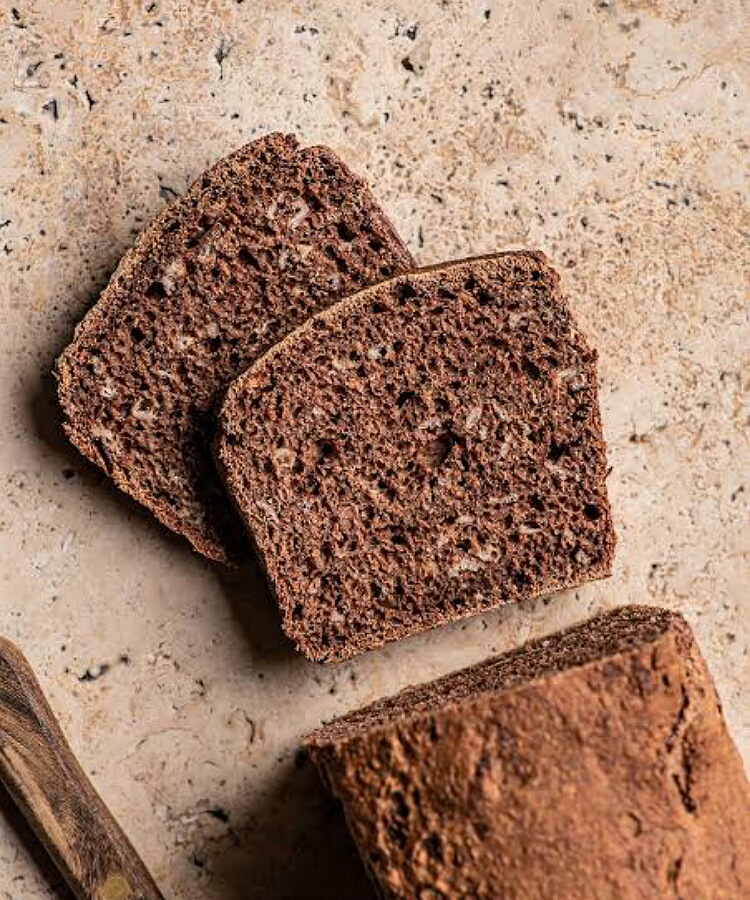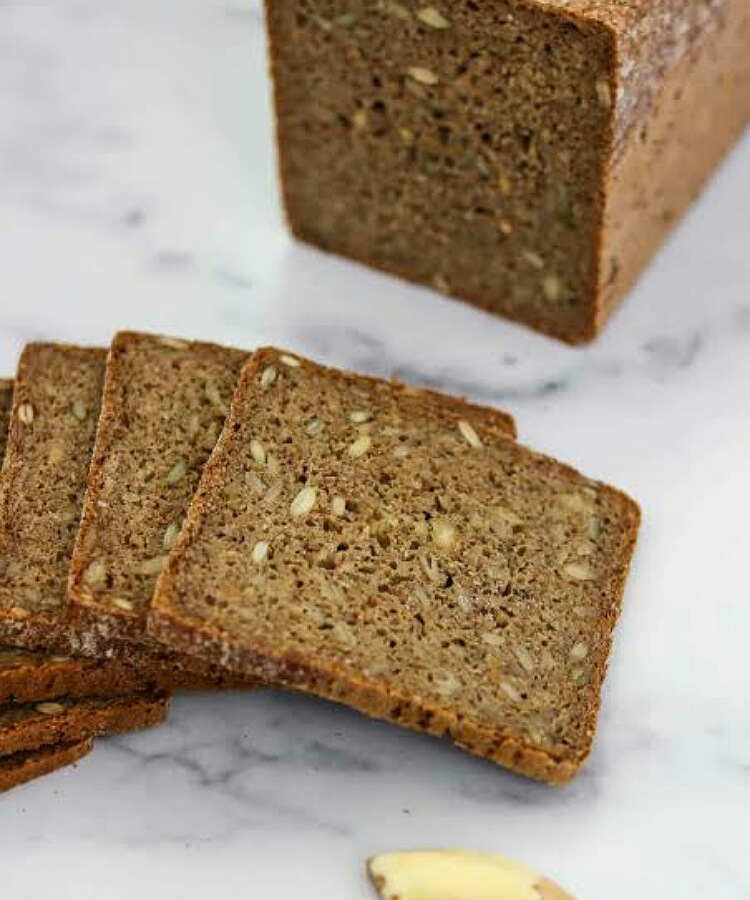Rye bread made from varying proportions of rye flour is healthy with lots of fiber in it. Its origin is Europe where rye produce is more especially in Eastern parts of this continent. Know its nutritive value and benefits for health.
Rye bread and its making
Rye bread is a type of bread where varying proportions of the rye flour is used. Its color can be light brown to dark brown. This color depends on how much of rye flour the baker adds to the dough mixture and on the type of rye flour. When bran is more in the rye flour, it has a darker color compared to the flour with no bran.
For structure and rise, the bread needs the gluten to be present in the bread after baking. The baking process should not destroy it. In case of wheat bread, this is possible because the wheat amylases are heat-labile. The oven heat inactivates the enzyme and hence gluten remains in the bread giving it the structure.

But the rye amylase is heat-stable. Hence its gluten (secalin) gets broken down and bread structure is difficult to get. Acidifying the dough can help but the added acid will destroy the Saccharomyces cerevisiae in baker’s yeast. However, the naturally acidic lactobacillus sourdough culture is suitable because it can lower the pH and cannot destroy the lactobacillus. Hence a lighter rye bread can be baked well and easily.
In other regions, people mix rye flour with wheat flour to produce a softer bread.
Nutrition
100 grams of this bread has 259 calories. Carbs are 48.3 grams with 3.85 grams of sugar. Fats are 3.3 grams and protein is 8.5 grams. Dietary fiber in this amount is 5.8 grams.

The bread has good amounts of vitamins and minerals. It has vitamin A. Vitamin B1, B2, B3, and B6 are in abundance. Moreover, it also has vitamin E and K in it. Bread of rye is rich in iron and calcium. It also has great amounts of phosphorus and magnesium. Sodium is 603 mg while potassium is 166 mg. Zinc is 1.14 mg.
Health benefits
Studies showed that rye bread can reduce blood cholesterol better compared to wheat bread. This is because of the high fiber present in this bread. This reduction is also faster and can happen in an interval of 4 weeks time. Due to this, this bread is suitable for people with heart diseases. It can protect heart and arteries and prevent blockages, heart attack and strokes.

Rye has a lower glycemic index. Its high fiber content is responsible for it. It slows and lowers the rise in blood sugar following a meal. Therefore, it is a healthier option for people who have diabetes mellitus. The other factors in the bread that assist in better sugar control are ferulic acid and caffeic acid. Additionally, it increases levels of satiety hormones leading to lesser food intake and better control of blood sugar.
This bread can also improve bowel movements and prevent constipation. Again its high fiber helps in it. It keeps the digestive system healthy. It raises levels of short chain fatty acids such as butyrate in the blood. This prevents weight gain, high blood sugar and lowers risk of colon cancer.
This bread can also reduce inflammation. But there is no strong scientific backing for this claim. It is claimed that it protects against prostate, breast, and colorectal cancers. But the evidence for it is weak.
Despite its plus points, rye bread also has some antinutrients and these can hinder absorption of zinc and iron. It has gluten in it and can cause bloating. It might contain added sugars.
